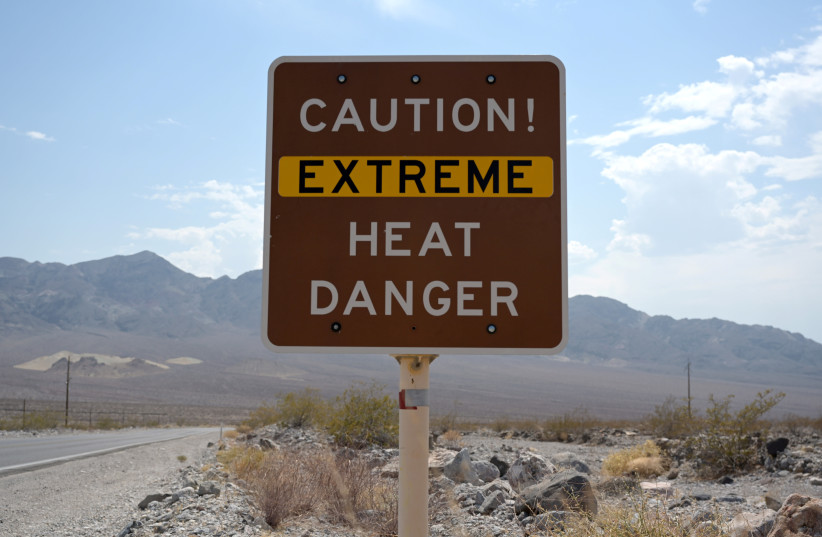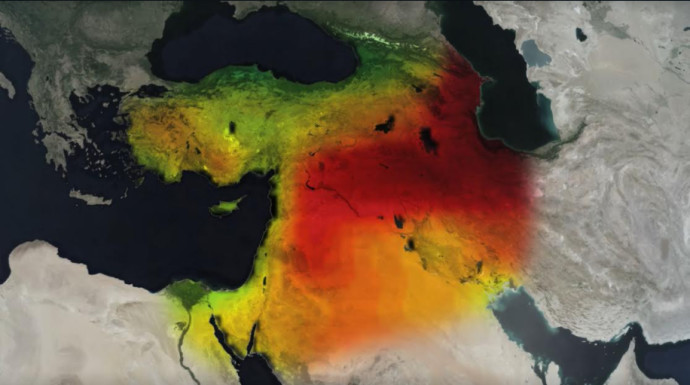The German and Cypriot researchers that conducted the research warn that this will soon become a reality unless “immediate, ambitious and transboundary climate action is taken.”
Published: SEPTEMBER 7, 2022

(photo credit: REUTERS/BRIDGET BENNETT/FILE PHOTO)
The Eastern Mediterranean and the Middle East – including Israel – are going to be affected by unprecedented and societally disruptive extreme weather events, including heat waves, droughts, dust storms and torrential rains, according to new research conducted by the Max Planck Institute for Chemistry and the Cyprus Institute.
The German and Cypriot researchers who conducted the research warned that this will soon become a reality unless “immediate, ambitious and trans-boundary climate action is taken.”
The new report was prepared by an international group of scientists and published in the authoritative journal Reviews of Geophysics under the title “Climate change and weather extremes in the Eastern Mediterranean and Middle East.” It identifies the area as a “climate change hot spot” and concludes that the region is warming almost two times faster than the global average and more rapidly than other inhabited parts of the world.
The 17 countries included in their analysis are Bahrain, Cyprus, Egypt, Greece, Iran, Iraq, Israel, Jordan, Kuwait, Lebanon, Oman, Qatar, Saudi Arabia, Syria, Turkey and the United Arab Emirates, along with the Palestinian Authority – some of them enemies that are actively fighting with each other. This raises the question of how they will get together to cope with the danger.
For the remainder of the century, projections based on a “business-as-usual pathway” indicate an overall warming of up to 5 degrees Celsius (9°F) in the listed countries. The warming will be strongest in the summer, the unprecedented heat-waves are expected to be societally disruptive.


The researchers also predicted that the region will experience rainfall shortages that compromise water and food security. Virtually all socioeconomic sectors are expected to be critically affected, with potentially devastating impacts on the health and livelihoods of the 400 million people of the region, with worldwide implications.
The report, prepared under the auspices of German and Cypriot institutes for presentation at COP27 – a conference that will take place in Egypt in November – signals that the Eastern Mediterranean, Middle East region (EMME) is rapidly overtaking the European Union as a source of greenhouse gases on a global scale.
The assessment also comprises a discussion of atmospheric pollution and land-use change in the region, considering urbanization, desertification and forest fires, and includes recommendations for possible climate change mitigation and adaptation measures.
Business-as-usual pathways will critically affect all socio-economic sectors
“Business-as-usual pathways for the future – meaning projections assuming no immediate, ambitious climate action to avert the current climate trajectories – imply a northward expansion of arid climate zones at the expense of the more temperate regions,” explained first author Dr. George Zittis of the Cyprus Institute, a world-class, nonprofit research and educational institution with a strong scientific and technological orientation.
“As a result, mountainous climate zones with snow will diminish during this century. The combination of reduced rainfall and strong warming will contribute to severe droughts.”
THE REGION’S SEA-LEVEL is projected to rise at a pace similar to global estimates, though many countries are unprepared for the advancing seas. This would imply severe challenges for coastal infrastructure and agriculture and can lead to the salinization of coastal aquifers, including the densely populated and cultivated Nile Delta,” Zittis warned.
Possible adaptation options and policy recommendations made in the report to help meet these targets stress the need for rapid implementation of decarbonization actions with a particular emphasis on the energy and transportation sectors, which dominate greenhouse gas emissions in the region.
The report also stressed the importance of transformational changes toward climate resilience to adapt to increasingly challenging environmental conditions. Priority areas include coping with limited water resources and preparing for more frequent weather extremes such as heat waves that will be particularly challenging for the growing urban population.
The projected changes will critically affect virtually all socioeconomic sectors, particularly under a business-as-usual scenario, said Jos Lelieveld, the Dutch-born director of the Max Planck Institute for Chemistry in Mainz that aims at an integral understanding of chemical processes in the Earth system, particularly in the atmosphere and biosphere.
“People living in the EMME will face major health challenges and risks of livelihood, especially underprivileged communities, the elderly, children and pregnant women,” he predicted.
“People living in the EMME will face major health challenges and risks of livelihood, especially underprivileged communities, the elderly, children and pregnant women.”Jos Lelieveld, director of the Max Planck Institute for Chemistry.
“To avoid the most extreme of severe weather events in the region, the scientists highlight that immediate and effective climate action is urgent. The motto of COP 27 is well chosen: together for just, ambitious implementation now,” he said.
“Since many of the regional outcomes of climate change are trans-boundary, stronger collaboration among the countries is indispensable to cope with the expected adverse impacts. The need to meet the goals of the Paris Agreement has become more important than ever,” Lelieveld concluded.
The study notes that meeting the main Paris Agreement targets could stabilize the annual temperature increase in the EMME to about 2°C (3.6°F) by the end of the century, instead of the devastating 5°C that is projected under a do-nothing scenario.
https://www.jpost.com/environment-and-climate-change/article-716538
